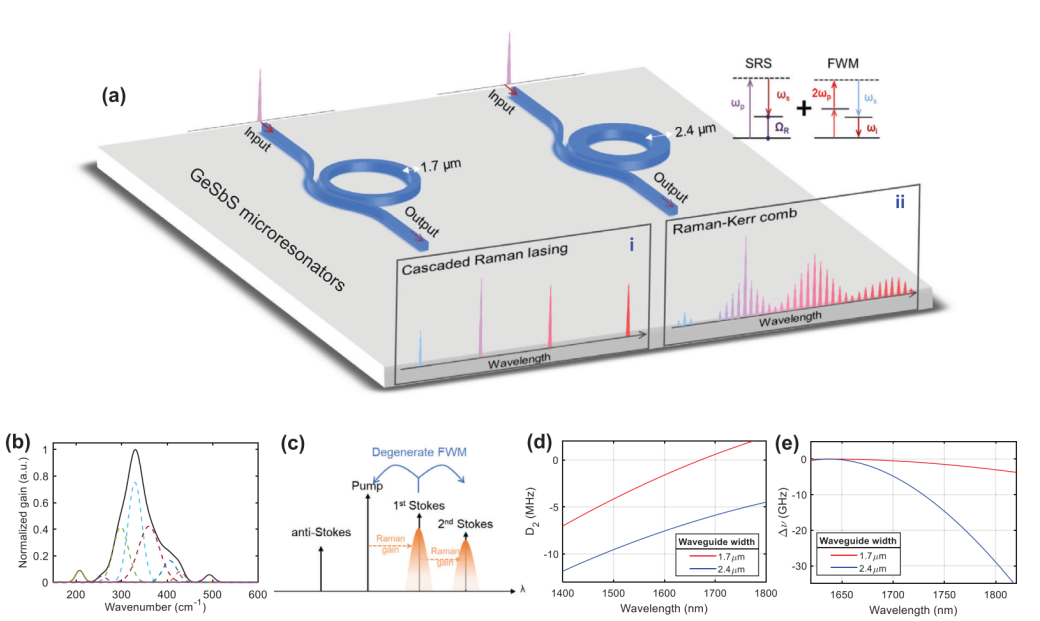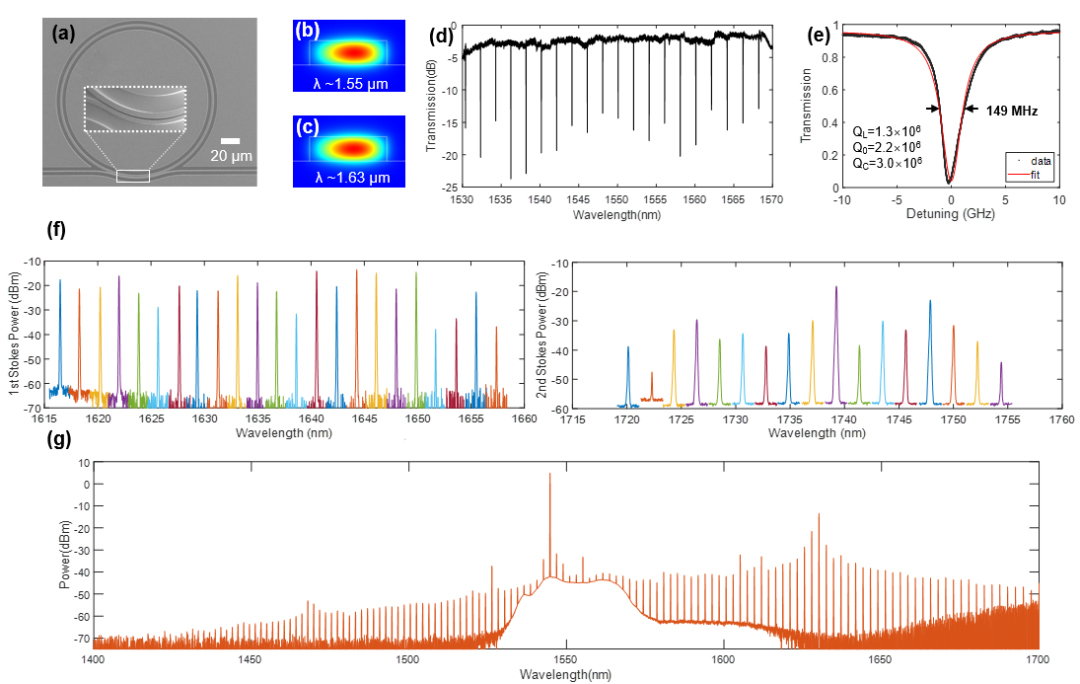Important Progress in Photonic Integrated Laser Made by Group of Prof. Zhaohui Li and Bin Zhang
Source: School of Electronics and Information Technology
Written by: Bin Zhang
Edited by: Zheng Longfei, Wang Dongmei
Recently, the widely-tunable Raman lasers, based on a novel home-developed chalcogenide (ChG) integrated photonic chip, have been successfully achieved by the research group of Professor Zhaohui Li and Associate Professor Bin Zhang, from the School of Electronics and Information Technology at Sun Yat-sen University. The research results entitled "Engineered Raman Lasing in Photonic Integrated Chalcogenide Microresonators" were recently published in Laser & Photonics Review (IF=13.9) on January 30, 2022.
Chip-integrated laser sources have been extensively applied in precise measurement, spectroscopy and molecular detection due to their excellent properties such as energy efficiency, small size, and low cost. As a result, large bandwidth and tunable integrated lasers have attracted long-term attention in integrated photonics. A larger wavelength tunability can be accessed by exploiting the Raman laser in the integrated photonic chip. However, challenges remain in achieving a wide and continuous tunability of the photonic Raman laser by the material properties and the ambiguous physical mechanism underlying the Raman lasing process.

Fig. 1 schematic of widely-tunable photonic integrated Raman lasers based on chalcogenide microresonators
To address the challenges mentioned above, the research group has built a home-developed chalcogenide glasses (GeSbS) integrated photonics platform. This platform features low loss, high Kerr nonlinearity, strong Raman gain, flexible dispersion engineering, and silicon-based integration compatibility, which is attractive to realize the high performance of on-chip Raman laser. In this work, for the first time, they proposed that the interplay between Raman and Kerr processes in the integrated microresonators can be proactively manipulated through the group velocity dispersion engineering. They have demonstrated highly-efficient cascaded Raman lasing and broadband Raman-Kerr comb in different microresonators, as shown in Fig. 1(a). By taking advantage of semiconductor processing technology, they realized the precise waveguide structure and the higher quality factor of chalcogenide microresonators. Thus, the flexible outputs between the cascaded Raman laser and the broadband Raman-Kerr frequency comb are obtained. In the experiment, they achieved a cascaded Raman laser with low pump threshold power of 3.5 mW in device i, and a Raman-Kerr comb with a bandwidth of over 200 nm in device ii. Furthermore, they also established a model considering both Raman gain and Kerr nonlinearity to numerically simulate this peculiar phenomenon. The accuracy of the design and experimental results are further theoretically verified, see Fig. 2.

Fig. 2. Engineered Raman lasing dynamics in different microresonators. (a)-(e) High-Q microring resonators. (f) Cascaded Raman lasering. (g) Broadband Raman-Kerr comb
This work is completed at Sun Yat-sen University. Ph.D. candidate Di Xia and Master’s student Yufei Huang from Sun Yat-sen University are the joint first authors. Associate Professor Bin Zhang and Professor Zhaohui Li are the co-corresponding authors. Prof. Hairun Guo and Suwan Sun from Shanghai University also contribute to this work. The authors acknowledge the support from the National Key R&D Program of China under Grant (2019YFA0706301), National Science Foundation of China (NSFC) (U2001601, 61975242, 61525502, 11974234, 62035018), the Science and Technology Planning Project of Guangdong Province (2019A1515010774), the Science Foundation of Guangzhou City (202002030103).
Link to the paper: https://onlinelibrary.wiley.com/doi/epdf/10.1002/lpor.202100443
